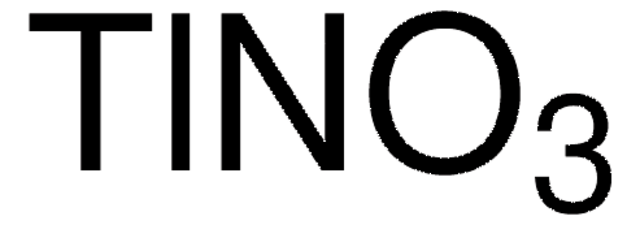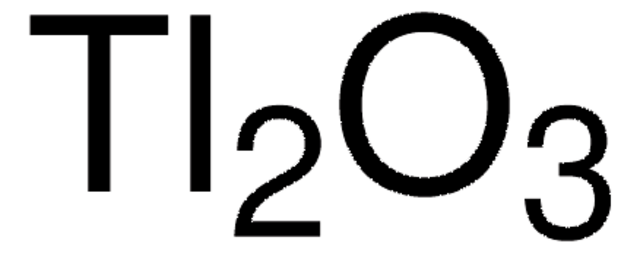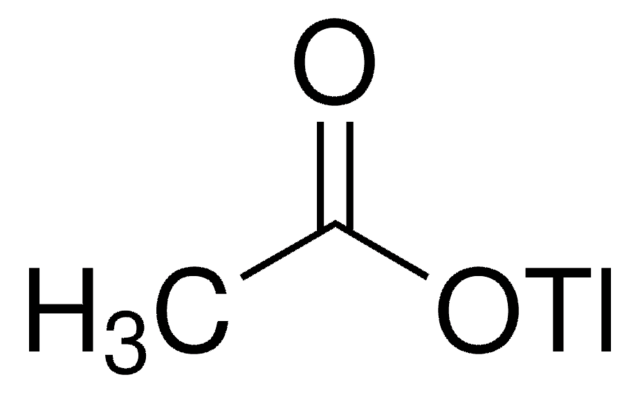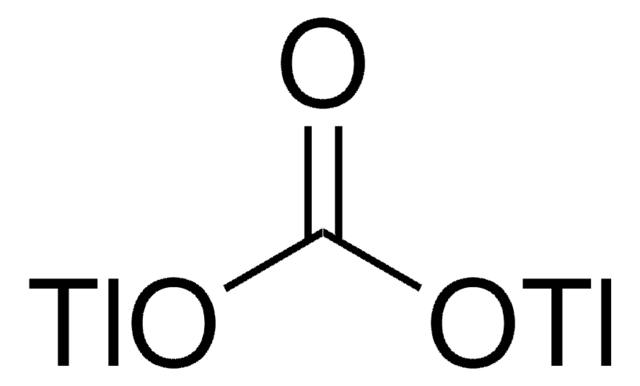309230
Thallium(I) nitrate
99.9% trace metals basis
Sinónimos:
Thallium mononitrate, Thallous nitrate
About This Item
Productos recomendados
Quality Level
assay
99.9% trace metals basis
form
solid
solid
impurities
≤1500 mg/kg Trace metallic impurities analysis (ICP)
mp
206 °C (lit.)
SMILES string
[Tl+].[O-][N+]([O-])=O
InChI
1S/NO3.Tl/c2-1(3)4;/q-1;+1
InChI key
FYWSTUCDSVYLPV-UHFFFAOYSA-N
¿Está buscando productos similares? Visita Guía de comparación de productos
General description
Application
- As an additive to synthesize thallium-containing cadmium selenide thin films by electrochemical deposition. The addition of TlNO3 decreases corrosion and helps to form uniform and stable thin films.
- As a dopant to prepare bismuth vanadate nanoparticles. TlNO3 reduces charge carrier recombination and enhances the photocatalytic activity.
- To prepare precursor solution for the detection of halogens by molecular absorption spectroscopy.
signalword
Danger
Hazard Classifications
Acute Tox. 2 Inhalation - Acute Tox. 2 Oral - Aquatic Chronic 2 - Ox. Sol. 3 - STOT RE 2
Storage Class
5.1B - Oxidizing hazardous materials
wgk_germany
WGK 3
ppe
Eyeshields, Faceshields, Gloves, type P3 (EN 143) respirator cartridges
Elija entre una de las versiones más recientes:
¿Ya tiene este producto?
Encuentre la documentación para los productos que ha comprado recientemente en la Biblioteca de documentos.
Los clientes también vieron
Nuestro equipo de científicos tiene experiencia en todas las áreas de investigación: Ciencias de la vida, Ciencia de los materiales, Síntesis química, Cromatografía, Analítica y muchas otras.
Póngase en contacto con el Servicio técnico















